Monarch Population Status
20 October 2009 | Author: Chip TaylorRemember “Goldilocks and the Three Bears”? It’s a great story for kids and I’ve started to use the essence of the story to explain the ups and downs of monarch numbers. This metaphorical usage all started when I was talking to a reporter a few years ago who did not seem to understand my long-winded explanations of why the monarch population in New England was proclaimed to be the largest seen in 30-40 years by many local experts. In frustration I said something like “Remember the story of the Three Bears…one bowl of porridge was too hot, one was too cold, and one was just right?” She got it and didn’t seem to be offended. In fact, she printed it! Thus was born “The Three Bears Theory of Ecology,” the core of which is based on the well-established principle that all organisms (and enzymatic reactions for that matter) operate on a curve – a temperature curve such that it can be too cold or too hot (to the point of death at both extremes) and just right in the middle. This year it was much too cold for good monarch reproduction in most of the monarch’s northern summer breeding areas. But, it was also too hot, too dry, and too wet. It’s all very complicated but I’ll try to put it all together as best I can.
Let’s start with the 2008/2009 overwintering population. The area occupied by monarchs at all the overwintering sites measured about 5.5 hectares – a modest population just a bit lower than the mean of 6 hectares for this decade. The butterflies wintered well, aside from some excessive mortality at Cerro Pelon, a colony that insists on forming at a badly cut over site. I spent four days from 7AM to 7PM working with a Disney film crew at El Rosario in early March and was impressed by two things: the low number of dead monarchs beneath the colony and the excellent condition of the butterflies for so late in the season. The monarchs were already on the move northward at this time and it seemed likely they would arrive in Texas in good condition and high numbers; however, the drought in Texas and the higher than normal temperatures in March and early April were not welcoming. These conditions took their toll on the arriving monarchs. The butterflies are 6-8 months old when they arrive in March and these are the kinds of conditions that reduce lifespan, egg laying, and therefore what ecologists refer to as “realized fecundity.” So, Texas in March was beyond optimum and therefore on the right side of the curve.
Because of these conditions, the numbers of first generation monarchs heading northwards from late April through the first two weeks of June was modest if not lower than normal. Unfortunately, this wave of butterflies moving northward encountered long periods of unfavorable weather. Further, those reaching parts of the East North Central climatic region (IA, MN, WI, MI), particularly Minnesota, encountered an unusual spring drought. Droughts sometimes reduce realized fecundity, especially if the effect is to reduce nectar availability and the availability of host plants, and this may have been the case in Minnesota in late May and early June.
The overall result for the first generation moving into the summer breeding range was that they got there late and the numbers arriving were low – then came the cold and wet weather. Cold and wet, other extremes, also reduce realized fecundity. Egg laying is restricted when it is too cold or raining and eggs deferred are seldom compensated for by more egg laying when conditions improve.
The summer breeding area for the monarchs consists of three climatic regions, the East North Central, Central, and North East (and there is the monarch production area in Ontario with weather that is usually midway between the East North Central and the North East). The summer temperatures (June-August) were colder than normal in all three regions. Precipitation was a bit lower than normal for the East North Central region but was above normal in both the Central and North East. Above normal precipitation isn’t necessarily bad but long rainy periods that reduce egg laying can reduce realized fecundity as I mentioned above.
The underlying reason for the cold summer was once again the position of the jet stream, which uncharacteristically settled over the middle part of the continent for most of the summer, just as it did in 2004. The poor monarch production in the cold summer of 2004 – a mere 2.19 hectares, the lowest population ever recorded in Mexico – prompted me to brush up on my meager knowledge of climates and causes of extremes resulting in my attempt to educate others about what I had learned (see “Teaching with Monarchs” from a January 2005 update). Will we see a low population in Mexico this winter? Yes, and my guess is that the total hectares will be in the range of 2 to 3.5 when all colonies are measured in December.
So, how cold was it in the summer of 2009? The total number of monarch degree days (in F) is shown for selected cities in the mid portion of the continent from 2003 through 2009 in Table 1. Note that for most cities the number of monarch degree days was about the same in 2004 and 2009.
Table 1. Monarch degree days (in F) for selected mid-continental cites from Dallas in the south to the limit of milkweeds and monarch reproduction in Winnipeg.*
| Year | Dallas, TX | Lawrence, KS | Des Moines, IA | St. Paul, MN | Winnipeg, MB |
|---|---|---|---|---|---|
| 2003 | 4511 | 3003 | 2626 | 2160 | 1508 |
| 2004 | 4458 | 2863 | 2391 | 1856 | 996 |
| 2005 | 4783 | 3180 | 2866 | 2250 | 1351 |
| 2006 | 4854 | 3007 | 2797 | 2394 | 1700 |
| 2007 | 4476 | 3417 | 2841 | 2450 | 1464 |
| 2008 | 4732 | 2966 | 2452 | 2228 | 1333 |
| 2009 | 4417 | 2893 | 2488 | 1981 | 1320 |
*Thanks to Janis Lentz for patiently calculating the monarch degree days.
The most recent previous cold summer was in 1992, the summer during which the dust veil from the eruption of Mount Pinatubo in the Philippines cooled the entire planet. Having a cold summer is one thing, but where it is cold and how extreme the cold was is another. It seems reasonable from all we know about monarch summer production that the greatest monarch production area is in the East North Central climatic region. The mean summer temperatures for this region from 1895-2009 are shown in Figure 1. A glance at the right of the figure shows the three cold summers mentioned above but if you look closely, you will see that you have to go back to 1928 to find a summer as cold as 2009 (aside from 1992 and 2004).
So, let’s revisit the Three Bears Theory of Ecology and that temperature curve. Aside from the winter conditions, which seemed to be optimal, the monarch population appears to have been either to the left or right of the most favorable temperature and precipitation conditions since leaving the overwintering colonies beginning in late February. On the bright side, the drought has eased in Texas and there is an abundance of flowers to sustain the monarchs as they pass through to Mexico.
Figure 1. Mean summer (June – August) temperatures for the East North Central climatic region from 1895-2009.
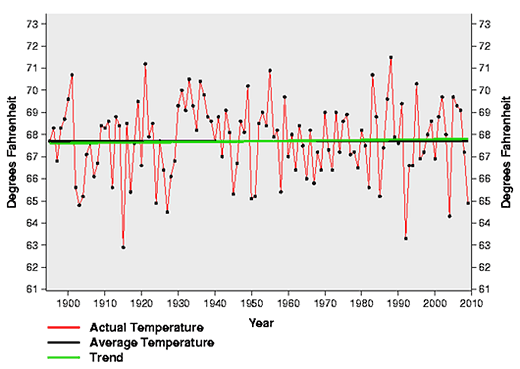

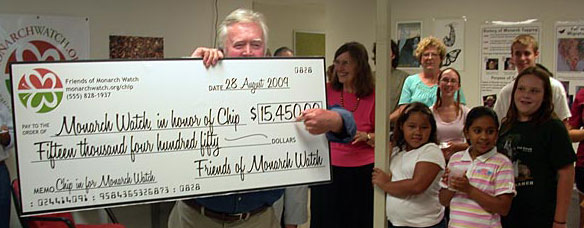


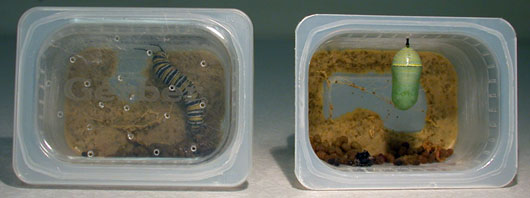




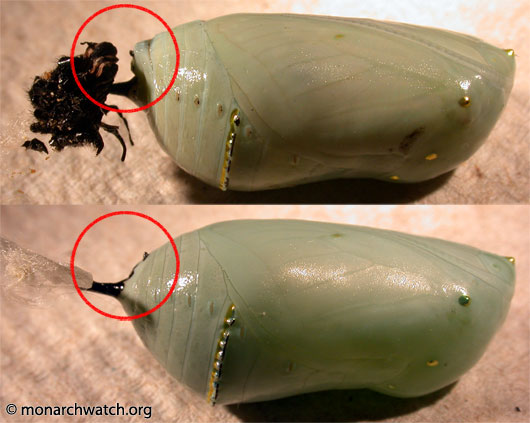
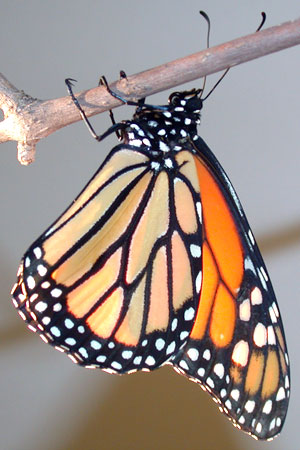


 Our tags for the
Our tags for the 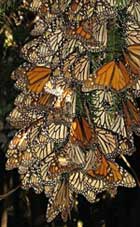 The number of migrating monarchs this fall should be similar to those observed in each of the last three years and the total area occupied by monarchs at the overwintering sites in Mexico should once again be close to five (5) hectares.
The number of migrating monarchs this fall should be similar to those observed in each of the last three years and the total area occupied by monarchs at the overwintering sites in Mexico should once again be close to five (5) hectares.


